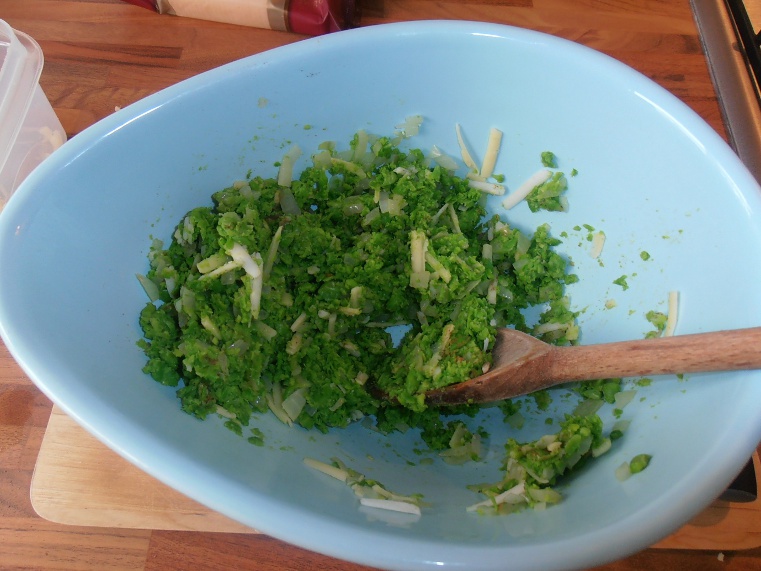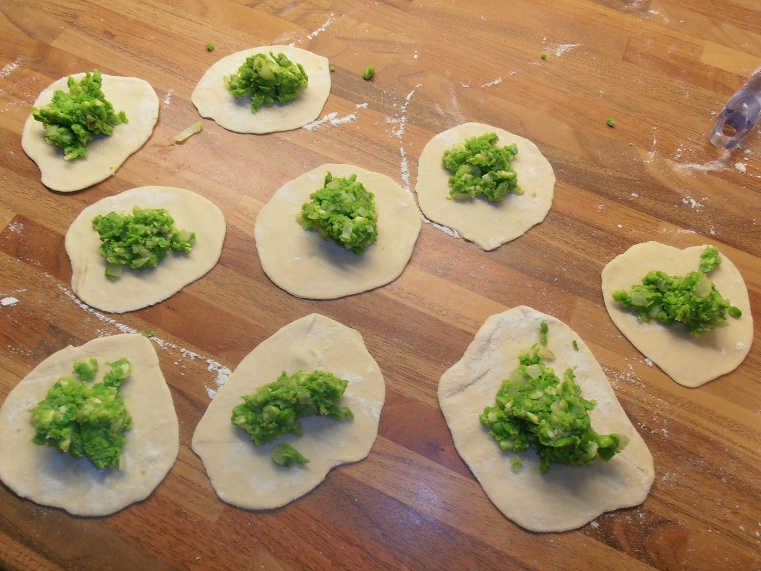| Home Contact Links |
Day-long Cookery Courses: | Basic Bread Making | Further Adventures in Bread | Jam and Curd | Basic Baking | Sour Dough and Sponges | Fancy Breads | Mediterranean Breads | Evening Cookery Club: | Christmas Treats |
| Other Services: | Talks and Demonstrations | Recipes for Forty Hall | Catering |
Forty Hall: Vegetable Recipes from the 1600s
Here you will find original recipes, notes and adaptations of the ones I have tried out so far. I have also included more information about the people who wrote the books.
- Elinor Fettiplace's Receipt Book
- The Closet of Sir Kenelm Digby, Knight, Opened
- The Accomplisht cook
Elinor Fettiplace's Receipt Book
Written by Elinor Fettiplace, 1604
Explained and published by Hilary Spurling, 1986
This is one of my favourite recipe books from the 1600s. First of all, even the original recipes are easy to understand and each one that I have tried has been delicious. The second reason why I love this book is for the detailed and interesting research that Hilary Spurling has done to bring both the recipes and the author to life. This does mean that I cannot give you too make details here as the book is still in print and under copyright; I have though included a link if you would like your own copy.
Elinor Fettiplace was the wife of Sir Richard Fettiplace. They were not rich, their estates were mortgaged to the hilt, but they were both of very good families with well-placed relatives. Between them they were related to the builder of Longleat, Sir Walter Raleigh (she includes a recipe by him), and the Whittington family that had produced Dick so many years before. Both families had long and (largely) honourable histories. In other words, at their most powerful they were influential, successful and rich.
They had money for several properties and luxury cooking ingredients, imported from abroad. At festival times they would have been entertaining large numbers of family and friends and Elinor would have been responsible for overseeing the food medicines and beauty recipes for all of them. Noble women of her day did not sit around doing a spot of embroidery; they ran their considerable households and staff and were quite capable of making sure they all had enough food to eat. They were also expert pastry chefs and sugar crafters.
She was born around about 1575, her cookery book is dated 1604, and she died around 1647. Her recipes cover the early half of the 1600s but with many recipe books of the time, academics tend to assume that the recipes had been around for a while before they were written down.
Spinach tart
A tart of spinage
Take the spinach and boil it in water till it be soft, then straine it and put to is the yolks of some eggs, and some rosewater and currants and sugar and some cinnamon and ginger and some butter, boil it on the fire and good while before putting it in the paste.
Elinor Fettiplace's Receipt Book, Hilary Spurling
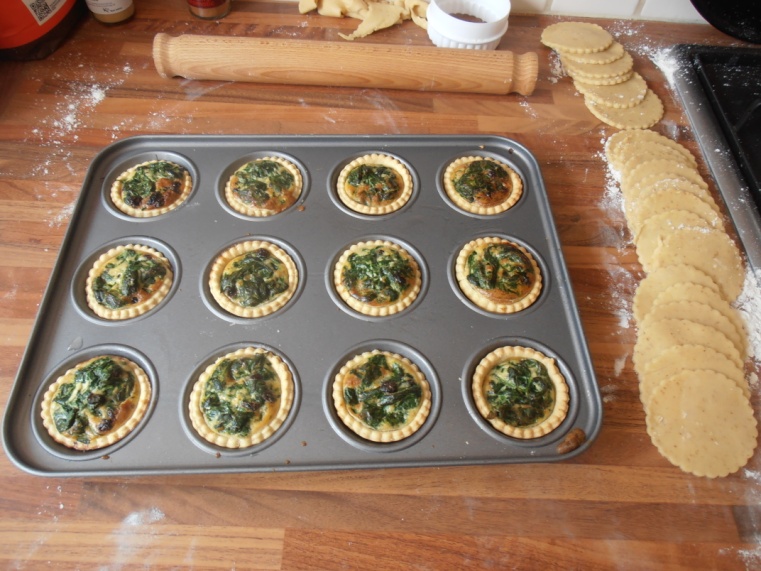
To make 2 dozen small tarts:
- A 250g bag of baby leaf spinach, washed, steamed, drained and chopped
- 1 oz butter
- Pinch of ginger, cinnamon, salt and sugar
- A handful of currants
- 2 to 3 tablespoons of rosewater
- 2 egg yolks (medium size)
- 3 whole eggs (medium size)
- Short crust pastry made from 4 oz of margarine and 8 oz of plain flour
While the pastry is resting in the fridge, prepare the spinach.
While the spinach is draining, melt the butter in the saucepan. There should be enough heat from the spinach so no need to risk burning the butter.
Stir in the spices and seasoning.
Add the currants and stir well.
Squeeze the spinach well and then chop it up.
Stir into the butter which should now be quite cooked.
Lastly stir in the eggs. The spinach might be very lumpy; it will need a very good stir.
Roll out your pastry into one large or 2 dozen small tarts.
Spoon in your mixture.
Cook at 180° C for 20 minutes (small) 25 to 30 minutes (large).
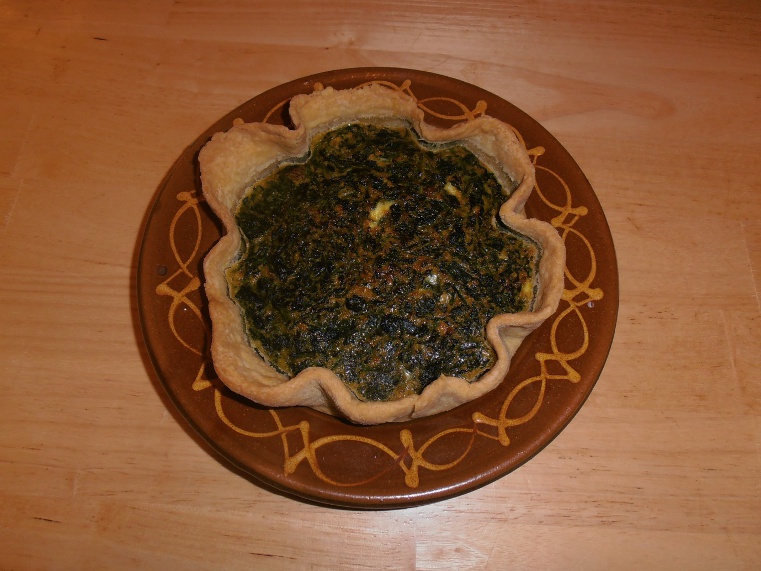
Sweet potato tart
Take the roots and boil then in water till they be very soft, then peel them and slice them this put some rosewater to them and sugar and peel of an orange and some of the juice of the orange, so let them boil a good while, then put some butter to them and when the butter is melted serve them. This way you may bake them, put them unboiled into the paste.
Elinor Fettiplace's Receipt Book, Hilary Spurling
This recipe needs very little explanation and many modern versions are available as the American settlers took it with them and still eat a very similar dish today. I have been served a version at a thanksgiving dinner that included cinnamon instead of orange and was topped with melted marshmallows, as a main course accompaniment. Whether the 17th Century versions were as sweet we cannot tell, but given how many recipes specify sugar it is reasonable to assume that they liked their food very sweet indeed.
For four people I would suggest:
- 3 medium to large size sweet potatoes
- 2 to 3 tablespoons of rosewater
- The peel and juice of one orange
- 1 oz of butter
As the recipe says:
Boil the potatoes, then peel and slice them.
Mix in the other ingredients.
Mash well together.
Put into a pastry case or well-greased oven dish.
Bake at 180 degrees for around 20 minutes.
Do not boil them again, that is only if you are intending on using a precooked pastry case and not cooking them in the oven.
The Closet of Sir Kenelm Digby, Knight, Opened
Written by Sir Kenelm Digby and published posthumously by his servant, 1669
Sir Kenelm Digby (July 11, 1603 - June 11, 1665) was an English courtier and diplomat. He was also a highly reputed natural philosopher, and known as a leading Roman Catholic intellectual and Blackloist. For his versatility, Anthony à Wood called him the "magazine of all arts".
Digby is known for the publication of a cookbook, The Closet of the Eminently Learned Sir Kenelme Digbie Knight Opened, but it was actually published by a close servant, from his notes, in 1669, several years after his death. It is currently considered an excellent source of period recipes, particularly for beverages such as mead.
Digby is also considered the father of the modern wine bottle. During the 1630s, Digby owned a glassworks and manufactured wine bottles which were globular in shape with a high, tapered neck, a collar, and a punt. His manufacturing technique involved a coal furnace, made hotter than usual by the inclusion of a wind tunnel, and a higher ratio of sand to potash and lime than was customary. Digby's technique produced wine bottles which were stronger and more stable than most of their day, and which due to their translucent green or brown color protected the contents from light. During his exile and prison term, others claimed his technique as their own, but in 1662 Parliament recognized his claim to the invention as valid.
Source: Wikipedia, "Kenelm Digby", available under the CC-BY-SA License.
This book is in the public domain and freely available from Project Gutenburg.
Pea soup
MY LORD LUMLEY'S PEASE-PORAGE
Take two quarts of Pease, and put them into an Ordinary quantity of Water, and when they are almost boiled, take out a pint of the Pease whole, and strain all the rest. A little before you take out the pint of Pease, when they are all boiling together, put in almost an Ounce of Coriander-seed beaten very small, one Onion, some Mint, Parsley, Winter-savoury, Sweet-Marjoram, all minced very small; when you have strained the Pease, put in the whole Pease and the strained again into the pot, and let them boil again, and a little before you take them up, put in half a pound of Sweet-butter. You must season them in due time, and in the ordinary proportion with Pepper and Salt.
This is a proportion to make about a Gallon of Pease-porage. The quantities are set down by guess. The Coriander-seeds are as much as you can conveniently take in the hollow of your hand. You may put in a great good Onion or two. A pretty deal of Parsley, and if you will, and the season afford them, you may add what you like of other Porage herbs, such as they use for their Porages in France. But if you take the savoury herbs dry, you must crumble or beat them to small Powder (as you do the Coriander-seed) and if any part of them be too big to pass through the strainer, after they have given their taste to the quantity, in boiling a sufficient while therein, you put them away with the husks of the Pease. The Pint of Pease that you reserve whole, is only to show that it is Pease-porage.
Sir Kenelm Digby, 1669
In his longwinded way, Sir Digby is saying that you can make this very much however you like. A quart is a quarter of a gallon (or 1.14 litres) and everything else is flexible. Using frozen peas this recipes is very quick to make and it freezes very well. If you eat a pulse and grain in the same meal then you will getting the full range of amino acids or proteins that are found in meat. So eat this with some wholemeal bread for a healthy, well balanced meal. It is also a truly lovely colour when freshly cooked.
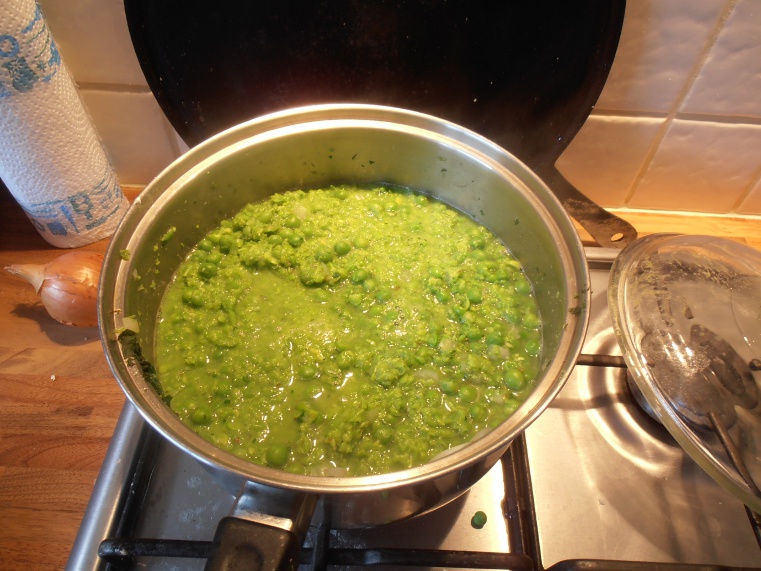
For the Forty Hall cookery demonstration the recipe was:
- 1.5 kg bag of frozen peas
- 1 onion, very finely chopped
- 1 small handful of crush coriander seeds (try and crush them yourself; powdered coriander would give a different flavour)
- 6 to 8 mint leaves, finely chopped
I followed the order in the recipe, first boiling the peas for 5 minutes, then adding in the other ingredients. I then took out about three-quarters of the peas and chopped them in the food processor fore adding them back again.
A modern soup recipe would tell you to first sweat the onion on a very low heat for 5 to 10 minutes to release the flavour. Then to probably add the coriander as spices release their flavours better when they are fried rather than boiled. Then you would add the peas and sweat off for a few more minutes before adding the water or, more likely today, stock and boiling for five minutes or so. The mint would go in either with the water or right at the end. This would give a different flavour that you may prefer.
The Accomplisht cook
Written by Robert May, Cook, 1660
Robert May (1588 - in or after 1664) was an English professional chef who trained in France and worked in England. He is best known for writing and publishing the 1660 cookbook The Accomplisht Cook.
Following the civil war, May wrote and published The Accomplisht Cook which he subtitled Or the Art and Mystery of Cooking. The work was first published in 1660, and the last revision made during the author's lifetime was published in 1665. The 1685 edition of the work (at least its fifth) contains about 300 pages. May's work is considered to be the first major recipe book to be published in England (prior to that, most cooks carefully guarded the secrets of their profession).
May's recipes included customs from the Middle Ages, however he also embraced food trends from Europe - for example by including dishes such as French bisque and Italian brodo (broth). The Accomplisht Cook is still considered to be one of "the most extensive English treatment of potages, broths, and soups", with about 20 percent of the volume devoted to them.
Source: Wikipedia, "Robert May (chef)", available under the CC-BY-SA License.
This book is in the public domain and freely available from Project Gutenburg.
Tortelleti, of green Pease, French Beans, or any kind of Pulse green or dry. Take pease gren or dry, French beans, or garden beans green or dry, boil them tender, and stamp them; strain them through a strainer, and put to them some fried onions chopped small, sugar, cinamon, cloves, pepper, and nutmeg, some grated parmisan, or fat cheese, and some cheese-curds stamped. Then make paste, and make little pasties, boil them in broth, or as beforesaid, and serve them with sugar, cinamon, and grated cheese in a fine clean dish.
Robert May 1660

To start with, Robert gives very little idea of what type of pastry to use. We would expect him to use a pasta recipe but in an earlier recipe he spends far more time talking about the shapes to make rather than about the type of pastry. The first time I made these I used a Chinese dumpling recipe because I knew that it would withstand boiling and because I was taught how to make it by a Chinese lady and knew that I was getting it more or less right. When you are experimenting with new recipes it can be hard to tell if you have achieved the right finish, even with modern recipe books with all their lovely pictures.
The problem with this pastry is that it is far too soft to achieve the shapes suggested in the recipes, stars, rolls or fish.
mingle all together and make a piece of paste of warm or boiling liquor, and some rose-water, sugar, butter; make some great and some very little, rouls or stars, according to the judgment of the Cook; boil them in broth, milk, or cream. Thus also fish. Serve them with grated fat cheese or parmisan, sugar, and beaten cinamon on them in a dish, &c.
